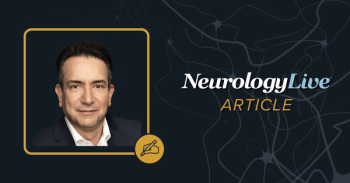
FDA Approves Genio OSA Therapy, Improved Motor Function With FUS, Soticlestat Evaluated in Dravet Sydrome
Neurology News Network for the week ending February 13, 2021.
This week Neurology News Network covered the FDA approval of Nyxoah's Genio neurostimulation-based obstructive sleep apnea therapy, a study on the benefits of focused ultrasound in Parkinson disease, and the results of the ELEKTRA study evaluating soticlestat in children with Dravet syndrome.
Welcome to this special edition of Neurology News Network. I’m Marco Meglio. Please excuse our appearance this week as a majority of the US workforce, including the NeurologyLive team, moves to working remote as we come together to help reduce the spread of the novel coronavirus.
The FDA has approved a magnetic resonance imaging (MRI) conditional labeling for Nyxoah’s Genio neurostimulation-based obstructive sleep apnea (OSA) therapy, currently being evaluated in the DREAM pivotal investigational device exemption (IDE) study.The revised labeling ensures patients who have already implanted the Genio system and those set to receive the therapy can now undergo full-body 1.5T and 3T MRI diagnostic scans within approved parameters, along with accessing the benefits that the unique bilateral stimulation therapy brings. Nyxoah received IDE approval from the FDA in June 2020 for the DREAM (Dual-sided Hypoglossal neRvE stimulAtion for the treatMent of Obstructive Sleep Apnea) study, which aims to confirm the safety and effectiveness of the Genio system in 134 moderate to severe patients with OSA who failed first line continuous positive airway pressure (CPAP) therapy.
Recently published study data in The New England Journal of Medicine suggest that
Data from the phase 2, multicenter, randomized, placebo-controlled, double-blind, parallel-group ELEKTRA study suggest that
For more direct access to expert insight, head to NeurologyLive.com. This has been Neurology News Network. Thanks for watching.
Newsletter
Keep your finger on the pulse of neurology—subscribe to NeurologyLive for expert interviews, new data, and breakthrough treatment updates.



























